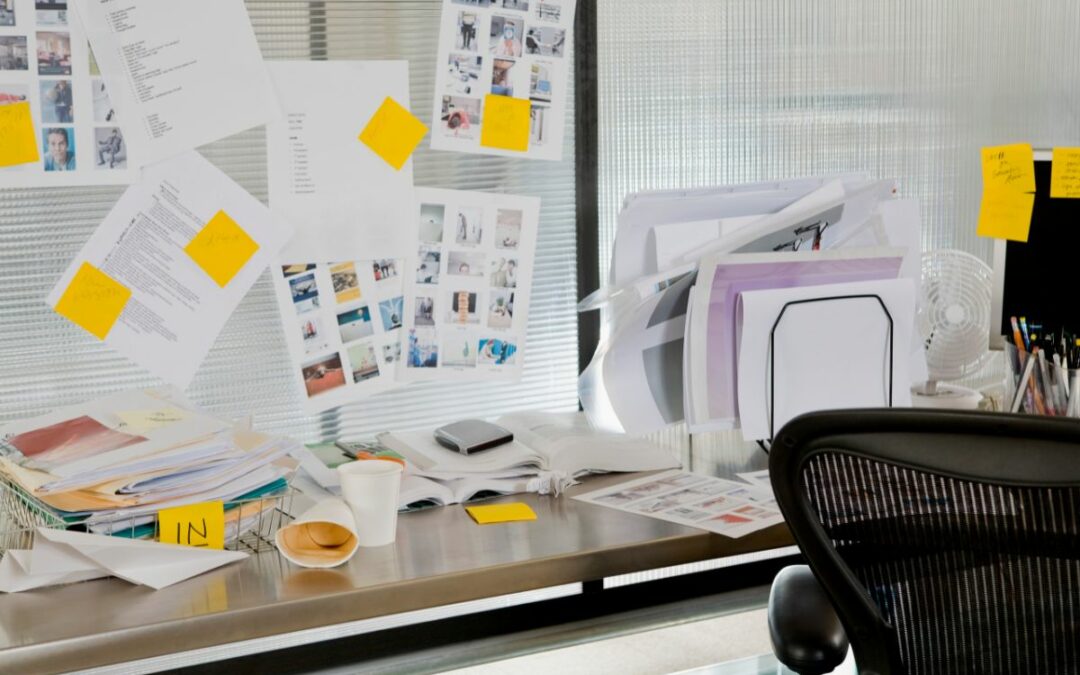It also discusses design considerations and uses in work and school settings. Also called partitioned desks or cubicle</a> desks, these workstations have dividers. They create separate spaces, provide privacy, and limit distractions.
What Is a Desk with Partition?
An office desk with a partition encloses the desk area in physical barriers or panels. Desk dividers may vary in size, material, and configuration in shared environments, but their primary purpose is to create semi-private or private workspaces. Their flexibility makes partition desks ideal for open-plan offices, libraries, and classrooms.
Benefits of Desks with Partitions
Increased Privacy
- Partition desks offer visual and acoustic separation, allowing individuals to focus without the distractions of nearby activity.
- They are particularly helpful in shared environments where employees or students need dedicated space to work on tasks.
Enhanced Productivity
- Reducing noise and distractions can significantly improve concentration, work quality, and efficiency.
- Partitions create a sense of personal ownership, motivating individuals to stay organized and productive.
Improved Health and Safety
- In a post-pandemic world, desks with partitions serve as barriers. They help reduce the spread of germs and keep physical distance.
- Some models feature transparent or antimicrobial panels, offering additional hygiene benefits.
Customization and Flexibility
- Desks with partitions come in various configurations, including L-shaped, U-shaped, and modular designs, making them adaptable to different workspace layouts.
- Depending on their aesthetic and functional requirements, institutions and businesses can choose from various materials, such as fabric, glass, metal, or wood.
Noise Reduction
- In noisy environments, acoustic panels built into desk partitions help absorb sound, making it easier for individuals to concentrate without external interference.
Common Types of Desks with Partitions
Cubicle Desks
- Traditional cubicle desks feature three or four walls around the workspace, offering maximum privacy.
- Often used in corporate offices, these desks are ideal for tasks requiring deep concentration or confidentiality.
Cluster Desks
- Cluster desks arrange multiple workstations with shared partitions, creating compact spaces for teams or students to work together while maintaining some degree of separation.
- These desks are standard in call centers, libraries, and classrooms where collaboration and privacy are necessary.
Single Desk with Side Panels
- These desks feature low-side panels, providing limited privacy while allowing visibility and communication.
- Suitable for offices and study rooms where a balance between focus and interaction is needed.
Adjustable Partition Desks
- Desks with movable or sliding partitions offer flexibility, enabling users to modify their workspace according to the task at hand.
- These are ideal for dynamic environments such as co-working spaces or creative studios.
Materials Used in Desk Partitions
Fabric Panels
- Fabric partitions are lightweight, available in assorted colors, and help with sound absorption.
- They are commonly used in office settings for visual separation and noise reduction.
Acrylic or Glass Partitions
- Transparent partitions allow natural light to flow while creating a sense of boundary.
- Glass panels are easy to clean, making them ideal for environments that prioritize hygiene, such as healthcare or education.
Wood and Laminate Partitions
- Wood partitions add warmth and texture to the workspace, creating a more traditional or sophisticated aesthetic.
- Laminates offer durability and come in various finishes, making them a practical choice for long-term use.
Metal or Aluminum Frames
- Metal-framed partitions provide a sleek, modern look and are often used for modular or industrial-themed office designs.
Design Considerations for Desk Partitions
Height and Size
- Partition height is crucial, low panels foster interaction, while high panels offer more privacy and focus.
- The size of the desk should align with the workspace layout to ensure easy movement and proper space utilization.
Lighting and Ventilation
- Open or transparent partitions ensure proper lighting and airflow, preventing the workspace from feeling cramped.
- Desk placement should also consider natural light sources to reduce eye strain.
Ergonomics
- Desk partitions should complement ergonomic designs, allowing space for monitoring arms, keyboards, and other office accessories.
- Adjustable desks with partitions enable users to switch between sitting and standing, promoting a healthier work environment.
Cable Management
- Effective cable management solutions, such as built-in channels or grommets, help keep the workspace organized and clutter-free.
Applications
Corporate Offices
- Desks with partitions are widely used in corporate environments to provide individual workspaces while maintaining a collaborative atmosphere.
- They are especially useful in open-plan offices, where partitions reduce noise and visual distractions.
Educational Institutions
- Schools, colleges, and libraries use partitioned desks to create focused student study spaces.
- Partition desks are also helpful during exams, preventing distractions and ensuring a fair testing environment.
Healthcare and Laboratories
- In healthcare settings, desks with partitions offer privacy and hygiene, ensuring secure documentation and communication.
- Research laboratories use partitioned workstations to help researchers focus on tasks requiring precision.
Co-Working Spaces
- Co-working environments benefit from modular desks with partitions, which can be rearranged easily to accommodate changing needs.
- These desks provide professionals with dedicated spaces while allowing collaboration when needed.
Home Offices
- For remote workers, partitioned desks can create a distinct workspace within a home, helping to separate work from personal life.
- Compact partitioned desks with acoustic panels help maintain focus in shared living spaces.
ABE provides flexible office furniture solutions
Partitions have become essential in modern workspace design, perfectly balancing privacy, productivity, and flexibility. Their flexibility makes them suitable for many places, like corporate offices, co-working spaces, classrooms, and home offices. With thoughtful design and material choices, partitioned desks enhance focus and organization and promote health and sustainability.
As workplaces change, partition desks are a smart and stylish way to create efficient and comfortable workspaces.

